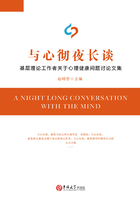Table 1 lists the demographic features of patients and controls. The two groups of subjects were matched for age(t34 = -.10,p>0.5)and education level(t34 = -.09,p >0.5).Patients scored significantly higher on mood rating scales(BDI:t 34 =19. 89,p <0.001;HDRS:t34 =23.66,p<0.001)than the normal controls.The average duration of current episode of depression for patients was7 months(range:from2 to18 months).
3.2.Behaiviour results
Extreme response times(below300ms and above2000ms)were eliminated from the analyses.Errors were rarely ever made by any subject,as evident from the error counts.Errors and mean reaction times are summarized in Tab.2.
Tab.2 Mean reaction times and standard deviation(in ms)and total number of errors for both groups.
As for response time,Repeatedmeasures ANOVAs with condition (experimental vs.control)as the withinsubject factor and group as the betweensubject factor were carried out for positive and negative words separately.In the positive trials,there was no main effect for condition(F1,34 =2.41,P >0.05).A Significant group main effect was found(F1,34 =4.40,P<0.05),reflecting that the normal controls responses were faster than the depressed patients.Moreover,a significant interaction effect between condition x group was found(F1,34 =4.30,P<0.05).Further analysis found response times of patients for positive targets were slower in the experimental condition than in the control condition(t 17 =2.46,P<0.05). However,no significant difference was observed between conditions in normal controls(t17= 0.38,P>0.05).
In the negative trials,no main effects were found for condition(F 1,34=0.47,P>0.05).Similar to the positive trial,there was also a significant group main effect(F1,34=4.34,p<0.05).The patients were slower in response to negative targets than the controls (778.40 104.81 vs.717.53 67.54).A significant interaction effect between condition x group was observed(F1,34 =14.95,P<0.001).Further analysis revealed significantly slower reaction times in the experimental condition than in the control condition for the control group(t17=2.84,P<0.05),and significantly faster reaction times in the experimental condition than in the control condition for the depressive group(t17= 2.66,P<0.05).
3.3.ERP results
3.3.1 Negative priming for negative trials
A2(group)x 2(condition)x 3(gradient)x 3(laterality) ANOVA was performed on the P2amplitude for negative trials.For the negative trial,no main effect for condition was found in P2 amplitude (F 1,34 =3.68,P >0.05).A significant group effect was observed(F1,34=31.42,P<0.001),indicating that P2 amplitude was smaller in depressed patients than in normal controls.A significant interaction effect between group x condition was also observed(F 1,34 =23.85,P <0.001).When the analysis was repeated for both groups separately,the experimental condition led to a reliable increase of positivity in the control group(condition:F1,17=17.94,P<0.01),which was most pronounced at left and midline electrode sites(condition x laterality:F2,34 =8.30,P<0.01)and central electrode sites(condition x gradient:F 2,34 =9.29,P<0. 01).However,the amplitude from negative targets revealed smaller P2 in the experimental condition than in the control condition in patients(F1,17 =6.19,P<0.05).Moreover,the difference between conditions depended on electrode gradient(condition x gradient:F2,34 =11.29,P<0.01,ε=0.66),indicating that the mean amplitude was more negative in the experimental condition at centralparietal sites.ERP recorded from C3 was more representative of the overall pattern of findings,which provide clear example of the amplitude effect observed in controls versus alcoholics,as shown by difference waves(the experimental condition minus control condition) of two groups and their topographical maps for negative trials in Fig.3 (A).
Repeatedmeasures ANOVAs performed on the LPC amplitude did not reveal a main effect of condition(F1,34=0.05,P>0.05) or a significant interaction effect of group x condition(F 1,34 =0. 72,P>0.05).However,a significant group effect(F 1,34 =5. 58,P <0.05)showed that LPC amplitude was smaller in patients than in controls.
Repeatedmeasures ANOVAs performed on the LPC latency found that no significant main effect for condition(F1,34 =0.02,P>0. 05)or group effect(F 1,34 =1.18,P >0.05)was revealed. However,A significant effect on the interaction between group x condition was noted(F1,34 =10.94,P<0.01).When the analysis was repeated for both groups separately,negative targets had longer LPC latency in the experimental condition than in the control condition for the control group(F1,17 =4.06,P<0.05),while the latency from negative targets appeared shorter in the experimental condition than in the control condition for the depressed group(F 1,17 =7. 74,P<0.05).
Fig.2.Grandaveraged eventrelated potentials evoked by positive and negative trials.
3.3.2 Negative priming for positive trials
A2(group)x 2(condition)x 3(gradient)x 3(laterality) ANOVA was performed on the P2 amplitude for positive trials.Different from negative trials,both groups exhibited overall increased P2 amplitude in response to the experimental positive targets(F1,34 =26.84,P<0.001).The difference between both conditions depended on electrode gradient(condition x gradient:F2,68 =18.60,P<0.001,ε=0.67),indicating that the mean amplitude was more positive in the experiment condition at parietal sites for both groups. The results are shown in Fig.3(B).No significant group main effect or interaction effect between group x condition(F1,34 =3.24,P>0.05;F1,34 =0.08,P>0.05)was found.
Fig.3.Difference waves(experimental minus control condition) for depressed patients(n =18,dashed line)and controls(n =18,solid lines),and their topographical maps at 140 280 ms(the top row is for patients;the bottom row is for controls)for negative trials (A)and positive trials(B)respectively.
Repeatedmeasures ANOVAs performed on the LPC amplitude showed that no significant main effect for condition or interaction effect between group x condition was observed(F1,34=1.97,P>0.05;F1,34 =0.04,P>0.05).When compared to normal controls,depressed patients tended to have reduced LPC amplitude,as indicated by a significant group main effect(F1,34=4.36,P<0.05).
Repeatedmeasures ANOVAs performed on the LPC latency showed that there was a significant main effect of condition(F 1,34=27.23,P<0.01).Positive targets had a longer latency in the experiment condition than in the control condition for both groups.No group effect or significant interaction effect between group x condition (F1,34=0.01,P>0.05;F1,34=1.58,P>0.05)was found.
4.Discussion
The present study mainly focused on the groups'difference and the comparison of different conditions of each group with respect to NAP tasks.The study provided neurophysiological support for impaired inhibition to negative information in depressed patients.
The behavioral results of the study largely replicated previous findings showing a reduced and even reversed NAP effect on negative trials in depressed patients.These results further support the view that depression is associated with a less effective inhibition towards negative information.Recent study confirm that the inability to regulate attention away from distressing information may be an important cognitive vulnerability factor in the maintenance and development of clinical mood disorders(Rude,et al.,2002).Unexpectedly,the result that participants in control group showed no difference of response times between conditions for positive trials was not consistent with the findings of NAP effect for positive trials in controls(Goeleven,et al., 2006;Joormann,2004).One possible explanation is that normal controls have difficulty inhibiting positive information.This idea is supported by the fact that research suggests positive bias is more common in nondepressed controls(Deldin,et al.,2001).In addition,because reaction times may be sensitive to response biases,filler trials in NAP paradigm,which were added to control the response bias,could also be one of the reasons.
Group difference showed depressed patients had an abnormally reduced P2 for negative trials compared with the controls,but not for positive trials,indicating valencedependent information processing in patients.This stands in contrast to the previous findings of increased P2 amplitude in patients(Vandoolaeghe,1998;Shimizu,2006). Our preferred interpretation of the reduced P2 is that inhibition deficiency caused by increased distractibility in depressed patients(Lepist et al.,2004)leads to a reduction of cognitive resources at relatively earlier stage.
The ERP findings in each group further reflected differences of different conditions at relatively early stages of information processing. Normal controls showed increased P2for both positive and negative experimental targets.The result is not in accordance with the report of Gibbons(2006),who found decreased P200 in identity NP trials. This can be explained by the substantial differences between the tasks used in these two experiments where different stimulus modalities could be an important factor.In view of the relationship between attention allocation and P2 amplitude(Carreti et al.,2001),the enhanced P2 reflects increased attention resources,which was used to overcome inhibition disturbance from prime distracter.The fact that the depressed patients showed smaller P2 amplitude at centralparietal electrodes for negative experimental targets,but not for positive experimental targets,indicates that the negative targets occupy less attention resources due to inhibition deficit.
LPC is regarded as a component related to the evaluative meaning.Differentiated from the quick and automatic process,a deliberative and controlled process is involved in the evaluation bias.At this stage,information is represented and analyzed more fully,with more factors considered and more experiences referenced.Although no difference for LPC latency was found between groups,LPC latency under different conditions in each group showed different patterns.The results from the LPC latency suggest that the normal controls require more time to finish psychological processes of positive and negative experimental targets.In the depressed group,less time is needed for negative experimental targets,but not for positive experimental targets.This implies that negative material can be analyzed and evaluated preferentially in the experimental condition.
For LPC amplitude between groups,depressed patients in the study had a remarkable reduction,supporting previous reports of reduced late P3 or LPC amplitude in depressed patients during cognitive tasks(Pierson et al.,1996;Kayser et al.,2000).To our knowledge,the present study is the first to examine brain mechanisms of impaired inhibition for negative affect in a clinically depressed sample.It is important to note that the ERP results concerning the depressed group also shed light on the ongoing debate regarding the underlying account for NP.In contrast to the inhibition view,an episodic retrieval supposes that the negative priming effect is assumed to be generated by a backwardacting memory process triggered by the probe episode instead of a forwardacting suppression mechanism based on the processing of the prime(Neil and Valdes,1992).In an episodic retrieval model of NP,we could expect an effect on the amplitude of LPC in the information process.However,we did not find an amplitude difference between conditions for either group.The episodic retrieval theory is well suited for all negative priming tasks with identity repetition of stimuli.In the classical NP paradigm,the experimental target is a repetition of the previous distracter that might generate an implicit memory trace which produces a positive or negative deflection in the ERP wave elicited by the repeated object(Kathmann et al.,2006;Mayr et al.,2003).In the negative affective priming paradigm,however, each word was used only once as a distracter or target.A probe target (e.g.angry)is related to the prime distracter(e.g.sad)only via the shared valence.No difference on LPC amplitude between conditions is understandable.Therefore,the consistency of our behavioral and ERP data suggests that the inhibition view seems to offer a more straightforward explanation for the negative affective priming effect.
In summary,the present data provides neurophysiological evidence of inhibition dysfunction for negative trials in depressed patients.In addition to the overall reduced P2 amplitude for negative trials and the overall reduced LPC amplitude for positive and negative trials in patients,we also found that reduced NAP effect for negative information in depressed patients appears to be related to the inhibition deficit of the early attention allocation stage and the faster stimulus evaluation stage.ERPs could be used in conjunction with behavioral data for assessing inhibition function.Further analysis of inhibition dysfunction could define specific patterns of brain dysfunction and help to pave the way for a cognitive neuropsychiatric model for depression.















